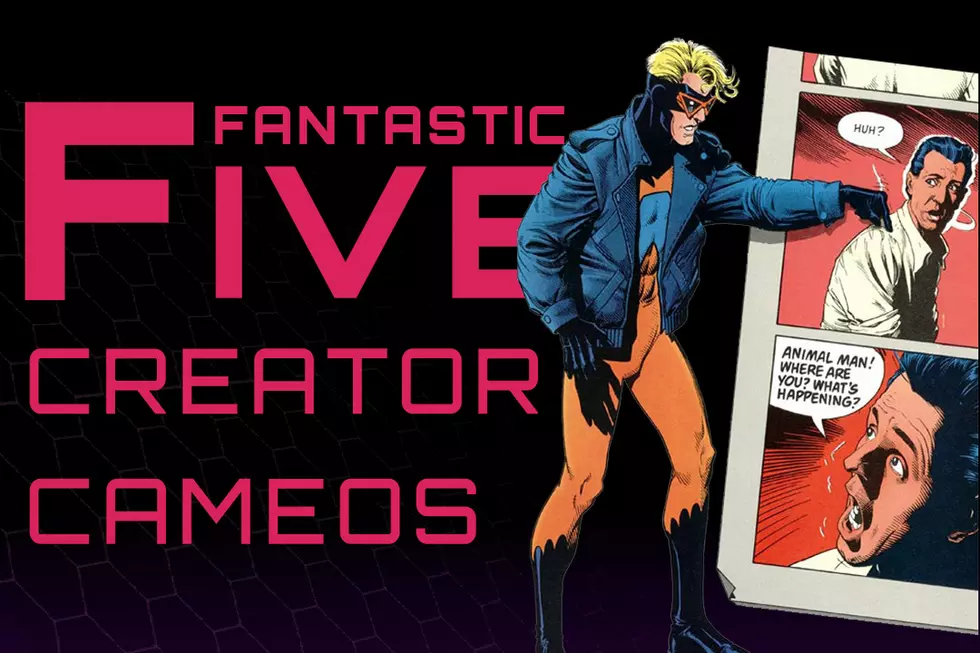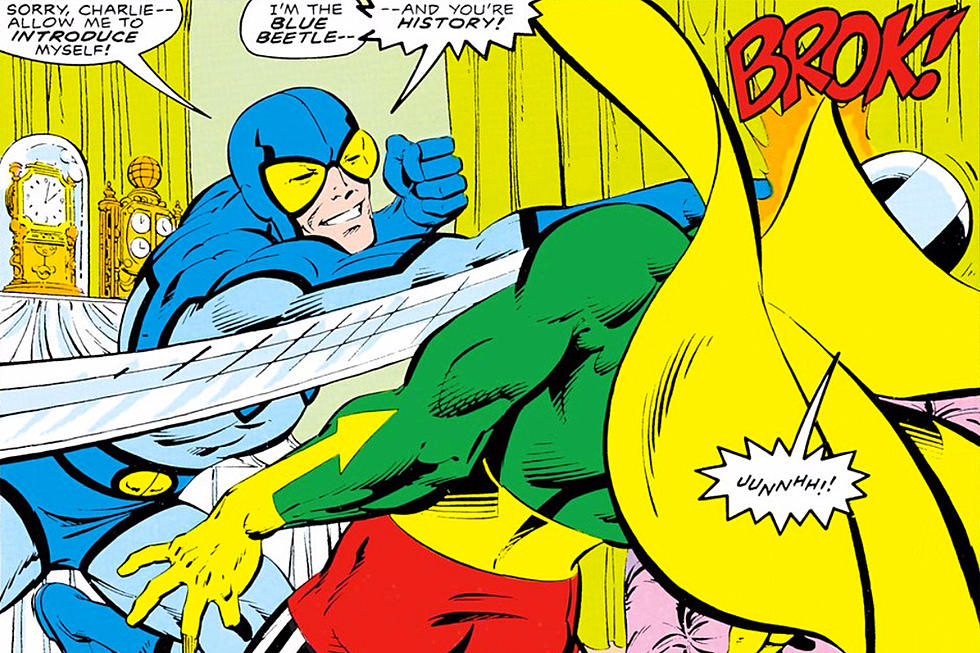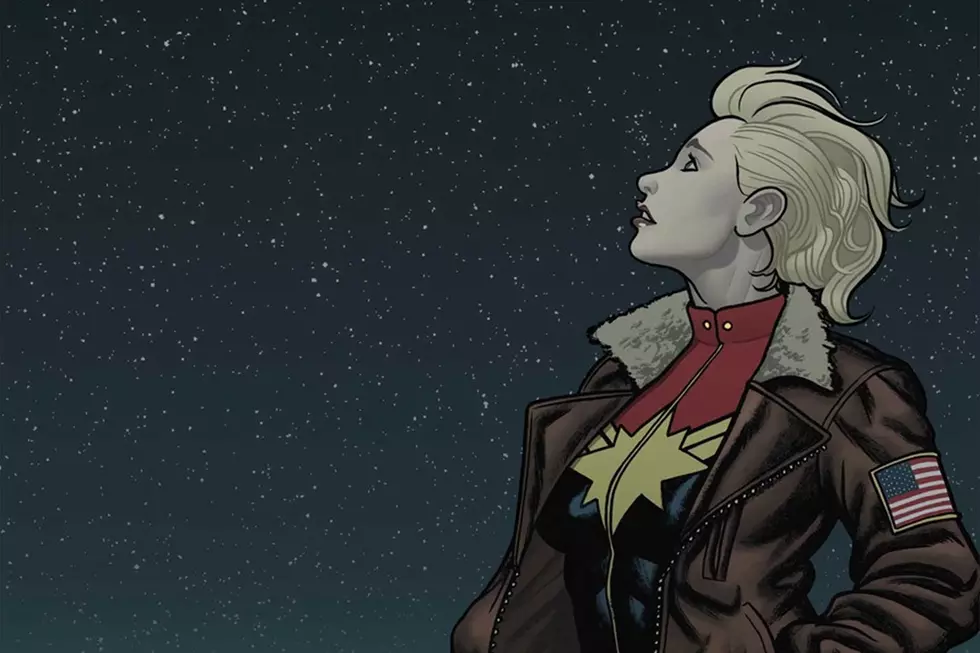
41 Years Ago: The First Appearance of Wolverine, The Best There Is At What He Does
On July 30th, 1974, Wolverine made his first full appearance in The Incredible Hulk #181, and comics history was forever changed. For some reason. Somehow, a funny-looking, funny-talking, pint-sized, hairy Canadian, who literally scratches people, became one of the most popular characters in comics. How did the guy with whiskers on his mask become the epitome of toughness?
Created by Len Wein and John Romita, and brought to life by Herb Trimpe, Wolverine could have easily become another throwaway character. With his bright yellow-and-blue costume, he looks at least as ridiculous as every other one-and-done character, save for the arresting hook of those razor-sharp claws.
His characterization was pretty wacky as well. He refers to the Hulk being "100 stone" heavier than him, even though Canada was still using pounds at the time. And his catchphrase, "I'm the best there is at what I do" is still in its pupal stage as "moving is the thing I do best!"
Still, enough of what came to be iconic about the character is in some way present in his first appearance: his toughness, his ferocity, and his damage. A mysterious Canadian general even refers to the "kinks in his psychological makeup" caused by the Weapon X program.
It's been said that the arrival of the Punisher and Wolverine in the mid-seventies kicked off the so-called "dark age" of comics, but those characters were little more than blips at first. They were part of the broader wave of antiheroes that pop culture produced in the cynical 70s, the comics versions of Dirty Harry Callahan and Charles Bronson's Paul Kersey, but their appearance didn't trigger a sudden shift toward darker material. Wolverine was a herald and a forebear, but it took time to polish the unbreakable stone that came to characterize the next decade.
With the raw materials provided by Wein, Romita, and Trimpe, Wolverine was fleshed out by Chris Claremont and John Byrne. Dave Cockrum also contributed, but it wasn't until Byrne arrived that the character received a real foothold in Uncanny X-Men. Claremont actually planned to jettison Logan before Byrne arrived.
The healing factor, adamantium skeleton, and mysterious past were introduced in the pages of X-Men; the chraracter's gruff exterior hardened, his pain and vulnerability were explored, and his iconic badassery was certified.
Wolverine was the first X-Man to get his own solo title, first a limited series by Claremont and Frank Miller that added new layers of depth, and further affirmed his 80s coolness by establishing him as something of a ronin; a masterless, wandering samurai. An ongoing series followed, and as superhero comics got darker, Wolverine's popularity and exposure continued to rise, first along with the X-Men, and then eclipsing them on his own. By the 90s, he was more popular among comics fans than Spider-Man, and there are plenty of guest appearances that earned a sales bump to prove it.
Of course, it all got to be too much at some point. Just as the speculators market collapsed and the dark age met the end of its usefulness, so did Wolverine. Over-reliance on him in X-Men titles led to a lot of dead-end, pointless, or just plain dumb storylines; overexposure led to a loss of that dangerous edge that made him interesting.
A few good Wolverine stories snuck through, but just like superhero comics in general, Logan's relevance seemed entirely in question by the mid-90s. When comics turned away from the unrelenting cynicism of the late 90s, it seemed as though Wolverine might not be able to keep up.
But superhero comics experienced a creative rebirth in the years leading up to the first X-Men film, and so did Wolverine, and Hugh Jackman's pitch-perfect rendition of the character ignited fresh interest in the character.
That led to the revelation of his early days in Origin by Paul Jenkins and Andy Kubert, and what originally seemed like a false move --- a large part of Wolverine's appeal was his mysteriousness --- turned out to be a brilliant maneuver. The story itself had problems, but it unlocked new possibilities for the character, and led to some of the best Wolverine stories ever told.
It really seems odd that Wolverine ever made it. A goofy-looking one-note character, almost dropped by the book that made him famous, somehow ended up defining the antihero for a generation. Just when he seemed to lose his cool, new complexities were uncovered. As the catchphrase goes, though, he's the best there is at what he does, and even when he's dead, there's never any doubt that he'll keep coming back.
You Think You Know Wolverine? Check Out These Facts You May Not Know
Check Out Some Classic Covers by Early Wolverine Artist Herb Trimpe
More From ComicsAlliance



![Unsinkable Ship: All The Girls Love Kitty Pryde (Especially Illyana) [Love & Sex Week]](http://townsquare.media/site/622/files/2017/02/kp_featured.jpg?w=980&q=75)





